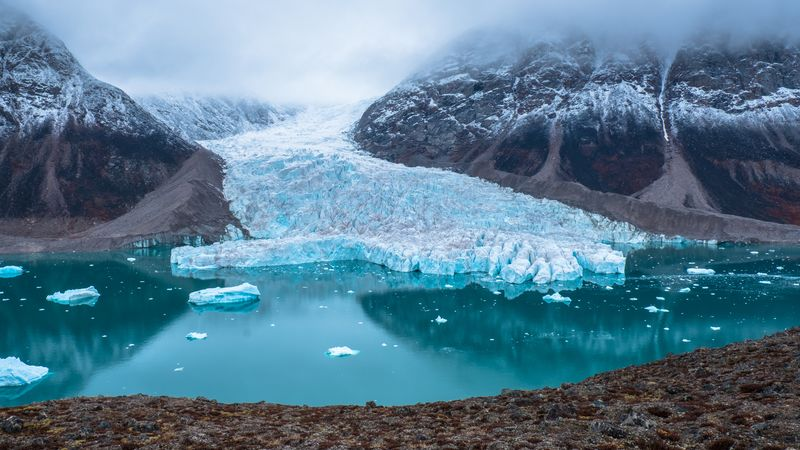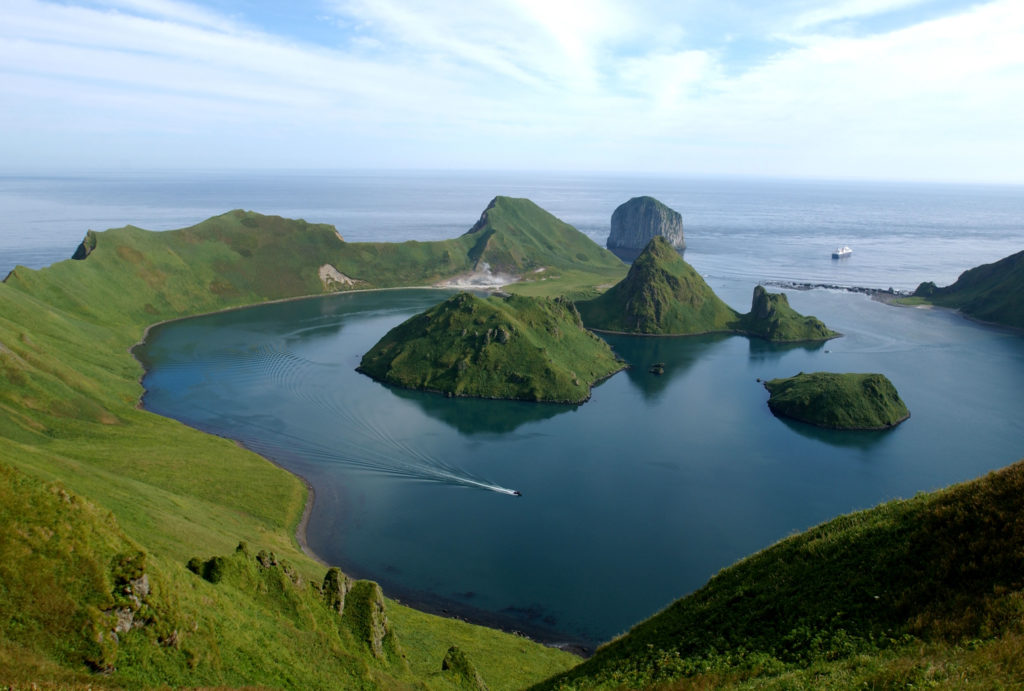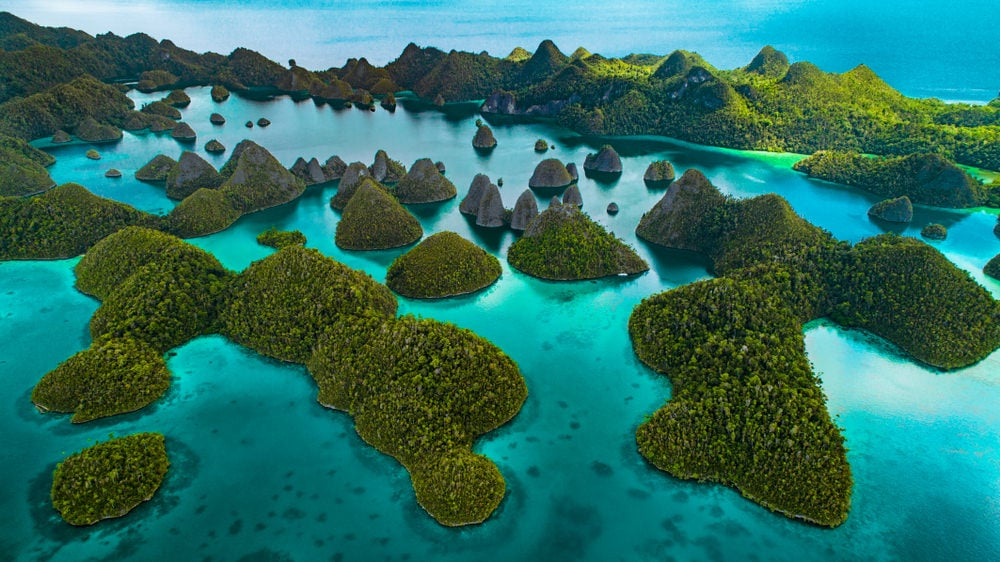Archipelagos, chains or clusters of islands scattered across vast expanses of ocean, have long captivated the imagination of explorers, adventurers, and nature enthusiasts alike. These idyllic landmasses, often formed by volcanic activity or the movement of tectonic plates, boast unique ecosystems, diverse cultures, and breathtaking landscapes that are unlike anything found on the mainland.
From the sun-drenched islands of the Caribbean to the rugged, windswept isles of the North Atlantic, archipelagos come in all shapes and sizes, each with its own distinct character and allure. Some are renowned for their pristine beaches and crystal-clear waters, while others are celebrated for their rich history, vibrant traditions, and endemic flora and fauna.
In this article, we will embark on a virtual journey to discover the top 12 largest archipelagos in the world. We will explore the geological origins, geographical features, and ecological significance of each archipelago, as well as the human stories and cultural heritage that have shaped these island chains over the centuries.
As we navigate the vast oceans and seas that separate these archipelagos from the rest of the world, we will gain a deeper appreciation for the incredible diversity and resilience of island life, and the vital role that these fragile ecosystems play in maintaining the delicate balance of our planet’s biosphere.
So, let us set sail on this epic voyage of discovery, and uncover the secrets and wonders of the world’s most spectacular archipelagos, from the tropical paradise of Indonesia to the remote and rugged islands of the Arctic Circle.
Malay Archipelago

The Malay Archipelago, also known as the East Indies or Maritime Southeast Asia, is the largest archipelago in the world, comprising over 25,000 islands that span a vast area of the Indian and Pacific Oceans. The archipelago includes the countries of Indonesia, the Philippines, Brunei, East Timor, and the eastern part of Malaysia, as well as the island of New Guinea, which is shared between Indonesia and Papua New Guinea.
The Malay Archipelago is home to an incredible diversity of flora and fauna, with many species that are found nowhere else on Earth. The region’s tropical rainforests, coral reefs, and mangrove swamps are among the most biodiverse ecosystems in the world, supporting a dizzying array of plant and animal life, from orangutans and Komodo dragons to bird-of-paradise and rafflesia flowers.
The archipelago is also renowned for its rich cultural heritage, with a tapestry of indigenous traditions, ancient kingdoms, and colonial influences that have shaped the region’s history and identity over the centuries. From the bustling markets of Jakarta and Manila to the remote villages of Papua and Borneo, the Malay Archipelago is a melting pot of languages, religions, and ways of life that reflect the incredible diversity of its people and landscapes.
Today, the Malay Archipelago faces numerous challenges, from deforestation and overfishing to climate change and rapid urbanization. However, efforts are underway to protect and preserve the region’s natural and cultural heritage, with initiatives ranging from sustainable tourism and conservation projects to community-based resource management and indigenous land rights.
Greek Archipelago

The Greek Archipelago, also known as the Aegean Islands, is a stunning collection of over 6,000 islands and islets that dot the Aegean Sea between Greece and Turkey. The archipelago is divided into seven main island groups, each with its own distinct character and charm, from the whitewashed villages and sandy beaches of the Cyclades to the lush forests and medieval castles of the Sporades.
The Greek Archipelago has a rich and complex history that dates back to ancient times, with many of its islands playing pivotal roles in the mythology, literature, and art of classical Greece. From the legendary island of Ithaca, home of the hero Odysseus, to the sacred island of Delos, birthplace of Apollo and Artemis, the archipelago is steeped in legend and lore that continue to captivate visitors to this day.
The islands of the Greek Archipelago are also renowned for their stunning natural beauty, with rugged coastlines, crystal-clear waters, and picturesque villages that seem to tumble down the hillsides into the sea. The archipelago is home to a unique ecosystem that supports a wide variety of plant and animal life, from the rare Mediterranean monk seal to the endemic Aegean wall lizard.
Today, the Greek Archipelago is a popular tourist destination, with millions of visitors flocking to its islands each year to soak up the sun, sample the local cuisine, and explore the ancient ruins and monuments that dot the landscape. However, the archipelago also faces challenges, from overcrowding and environmental degradation to economic instability and political unrest.
Japanese Archipelago

The Japanese Archipelago is a chain of over 6,800 islands that stretches for nearly 3,000 kilometers along the eastern coast of Asia, from the Sea of Okhotsk in the north to the East China Sea in the south. The archipelago is divided into four main islands – Honshu, Hokkaido, Kyushu, and Shikoku – as well as numerous smaller islands and islets that are scattered throughout the surrounding seas.
The Japanese Archipelago is a geologically active region, with numerous volcanoes, hot springs, and seismic faults that have shaped the islands’ rugged terrain and unique ecosystems over millions of years. The archipelago is also home to a wide variety of plant and animal life, from the iconic cherry blossom and Japanese macaque to the rare and endangered Iriomote wildcat and Okinawa rail.
The islands of the Japanese Archipelago have a long and complex history that spans thousands of years, from the ancient Jomon and Yayoi cultures to the rise of the samurai and the emergence of modern Japan. The archipelago has been shaped by a unique blend of indigenous traditions, Chinese influences, and Western innovations that have given rise to a rich and diverse culture that is celebrated around the world.
Today, the Japanese Archipelago is a global economic and cultural powerhouse, with a thriving technology industry, a renowned culinary scene, and a vibrant arts and entertainment sector. However, the archipelago also faces significant challenges, from an aging population and a shrinking workforce to the impacts of climate change and natural disasters.
Philippine Archipelago

The Philippine Archipelago is a vast collection of over 7,600 islands that stretches across the western Pacific Ocean, from the Bashi Channel in the north to the Celebes Sea in the south. The archipelago is divided into three main island groups – Luzon, Visayas, and Mindanao – each with its own distinct geography, culture, and history.
The Philippine Archipelago is a biodiversity hotspot, with an incredible array of plant and animal life that is found nowhere else on Earth. The archipelago’s tropical rainforests, coral reefs, and mangrove swamps are home to thousands of endemic species, from the Philippine eagle and the tarsier to the rafflesia and the waling-waling orchid.
The islands of the Philippine Archipelago have a rich and complex history that dates back to ancient times, with waves of migration and colonization that have shaped the archipelago’s diverse cultural landscape. From the indigenous peoples of the highlands to the Spanish and American colonial influences of the lowlands, the Philippine Archipelago is a melting pot of languages, religions, and traditions that reflect its unique position at the crossroads of Asia and the Pacific.
Today, the Philippine Archipelago is a rapidly developing nation, with a growing economy, a young and dynamic population, and a vibrant cultural scene that is gaining global recognition. However, the archipelago also faces significant challenges, from widespread poverty and inequality to environmental degradation and the impacts of climate change.
Canadian Arctic Archipelago

The Canadian Arctic Archipelago is a vast collection of over 36,000 islands and islets that stretches across the northern reaches of Canada, from the Beaufort Sea in the west to Baffin Bay in the east. The archipelago is divided into several main island groups, including the Queen Elizabeth Islands, the Parry Islands, and the Sverdrup Islands, each with its own unique geography and ecology.
The Canadian Arctic Archipelago is a remote and rugged wilderness, with a harsh and unforgiving climate that has shaped the region’s unique ecosystems and ways of life over thousands of years. The archipelago is home to a wide variety of plant and animal species that have adapted to the extreme conditions of the Arctic, from the polar bear and the Arctic fox to the Arctic willow and the purple saxifrage.
The islands of the Canadian Arctic Archipelago have a long and complex history that spans millennia, from the ancient Inuit and Thule cultures to the European explorers and whalers of the 19th and 20th centuries. The archipelago has played a pivotal role in the history of Arctic exploration and scientific research, with numerous expeditions and studies that have shed light on the region’s geology, climate, and ecology.
Today, the Canadian Arctic Archipelago is a vital region for Canada and the world, with significant economic, strategic, and environmental importance. The archipelago is home to vast reserves of oil, gas, and minerals, as well as critical shipping routes and military installations. However, the region also faces significant challenges, from the impacts of climate change and environmental degradation to the ongoing struggles for indigenous rights and self-determination.
Aleutian Islands

The Aleutian Islands are a chain of over 300 volcanic islands and islets that stretch for nearly 1,900 kilometers across the northern Pacific Ocean, from the Alaska Peninsula in the east to the Kamchatka Peninsula in the west. The islands are part of the U.S. state of Alaska and are divided into several main groups, including the Fox Islands, the Andreanof Islands, and the Rat Islands.
The Aleutian Islands are a geologically active region, with numerous active and dormant volcanoes that have shaped the islands’ rugged terrain and unique ecosystems over millions of years. The islands are also home to a wide variety of plant and animal species that have adapted to the harsh and unpredictable conditions of the North Pacific, from the Aleutian cackling goose and the Steller’s sea lion to the Aleutian shield fern and the Aleutian avens.
The islands of the Aleutian chain have a long and complex history that spans thousands of years, from the ancient Aleut people who first settled the islands to the Russian fur traders and American military personnel of the 19th and 20th centuries. The Aleutian Islands played a pivotal role in World War II, with the Japanese occupation of the islands of Attu and Kiska and the subsequent Allied campaign to retake the islands.
Today, the Aleutian Islands are a remote and sparsely populated region, with a small number of indigenous communities and a handful of fishing and military outposts scattered across the archipelago. The islands are also an important site for scientific research, with numerous studies focused on the region’s unique geology, ecology, and climate.
Kuril Islands

The Kuril Islands are a chain of over 50 volcanic islands and islets that stretch for nearly 1,300 kilometers across the Sea of Okhotsk, from the southern tip of the Kamchatka Peninsula to the northern tip of Hokkaido, Japan. The islands are currently administered by Russia, but are also claimed by Japan, with a long-standing territorial dispute that has strained relations between the two countries.
The Kuril Islands are a geologically active region, with numerous active and dormant volcanoes that have shaped the islands’ rugged terrain and unique ecosystems over millions of years. The islands are also home to a wide variety of plant and animal species that have adapted to the harsh and unpredictable conditions of the northwest Pacific, from the Steller’s sea eagle and the Kuril harbor seal to the Kuril bamboo and the Sakhalin spruce.
The islands of the Kuril chain have a long and complex history that spans thousands of years, from the ancient Ainu people who first settled the islands to the Russian and Japanese colonial powers of the 18th and 19th centuries. The Kuril Islands played a pivotal role in World War II, with the Soviet invasion and occupation of the islands in the final days of the war.
Today, the Kuril Islands are a remote and sparsely populated region, with a small number of Russian military and civilian outposts scattered across the archipelago. The islands are also an important site for scientific research, with numerous studies focused on the region’s unique geology, ecology, and climate. However, the ongoing territorial dispute between Russia and Japan has hindered economic development and international cooperation in the region.
Solomon Islands

The Solomon Islands are a scattered archipelago of over 900 islands and atolls that stretch across the southwestern Pacific Ocean, to the east of Papua New Guinea and to the northwest of Vanuatu. The islands are divided into nine main provinces, each with its own distinct geography, culture, and history.
The Solomon Islands are a tropical paradise, with lush rainforests, pristine beaches, and vibrant coral reefs that support an incredible diversity of plant and animal life. The islands are home to numerous endemic species, from the Solomon Island sea eagle and the Santa Cruz shrikebill to the Guadalcanal boulder rat and the Malaita fantail.
The islands of the Solomon archipelago have a rich and complex history that spans thousands of years, from the ancient Lapita people who first settled the islands to the European explorers and colonial powers of the 19th and 20th centuries. The Solomon Islands played a pivotal role in World War II, with the brutal campaign for Guadalcanal that marked a turning point in the war in the Pacific.
Today, the Solomon Islands are a developing nation, with a small and largely subsistence-based economy that is heavily dependent on agriculture, fishing, and forestry. The islands face numerous challenges, from widespread poverty and lack of infrastructure to the impacts of climate change and environmental degradation. However, the Solomon Islands are also a vibrant and resilient nation, with a strong sense of cultural identity and a deep connection to the land and sea.
Svalbard Archipelago

The Svalbard Archipelago is a group of islands located in the Arctic Ocean, roughly halfway between Norway and the North Pole. The archipelago is part of the Kingdom of Norway, but is governed by a unique international treaty that grants equal rights to citizens of all signatory countries.
The Svalbard Archipelago is a remote and rugged wilderness, with a harsh and unforgiving climate that has shaped the islands’ unique ecosystems and ways of life over thousands of years. The archipelago is home to a wide variety of plant and animal species that have adapted to the extreme conditions of the high Arctic, from the polar bear and the Arctic fox to the Svalbard poppy and the Svalbard reindeer.
The islands of the Svalbard Archipelago have a long and complex history that spans centuries, from the early Norse explorers and whalers to the coal miners and scientific researchers of the 20th and 21st centuries. The archipelago played a pivotal role in Arctic exploration and scientific research, with numerous expeditions and studies that have shed light on the region’s geology, climate, and ecology.
Today, the Svalbard Archipelago is a vital region for Norway and the world, with significant economic, strategic, and environmental importance. The archipelago is home to a small but thriving community of scientists, tourists, and adventurers, as well as a number of critical scientific and military installations. However, the region also faces significant challenges, from the impacts of climate change and environmental degradation to the ongoing geopolitical tensions in the Arctic.
Zanzibar Archipelago

The Zanzibar Archipelago is a group of islands located in the Indian Ocean, off the coast of Tanzania in East Africa. The archipelago consists of two main islands, Unguja and Pemba, as well as numerous smaller islands and islets.
The Zanzibar Archipelago is a tropical paradise, with white sandy beaches, crystal-clear waters, and lush spice plantations that have earned the islands the nickname “Spice Islands”. The archipelago is home to a unique blend of African, Arab, and Indian cultures, with a rich history that spans over a thousand years of trade, conquest, and cultural exchange.
The islands of the Zanzibar Archipelago have a long and complex history that spans centuries, from the early Bantu settlers and Persian traders to the Omani sultans and European colonial powers of the 19th and 20th centuries. The archipelago played a pivotal role in the Indian Ocean trade network, with a thriving economy based on the export of spices, ivory, and slaves.
Today, the Zanzibar Archipelago is a semi-autonomous region of Tanzania, with a small but growing economy based on tourism, agriculture, and fishing. The islands are a popular destination for travelers seeking a unique blend of history, culture, and natural beauty, with numerous historical sites, museums, and nature reserves that showcase the archipelago’s rich heritage and biodiversity.
Falkland Islands

The Falkland Islands are an archipelago located in the South Atlantic Ocean, roughly 500 kilometers off the coast of Argentina. The islands are a British Overseas Territory, but are also claimed by Argentina, which refers to them as the Malvinas.
The Falkland Islands are a remote and rugged wilderness, with a cool and windy climate that has shaped the islands’ unique ecosystems and ways of life over thousands of years. The archipelago is home to a wide variety of plant and animal species, many of which are found nowhere else on Earth, from the Falkland Island wolf and the Falkland steamer duck to the Falkland woolly daisy and the Falkland flightless moth.
The islands of the Falkland Archipelago have a long and complex history that spans centuries, from the early sightings by Dutch and British explorers to the establishment of British rule in the 19th century. The archipelago played a pivotal role in the history of the British Empire, serving as a strategic outpost for naval and commercial operations in the South Atlantic.

